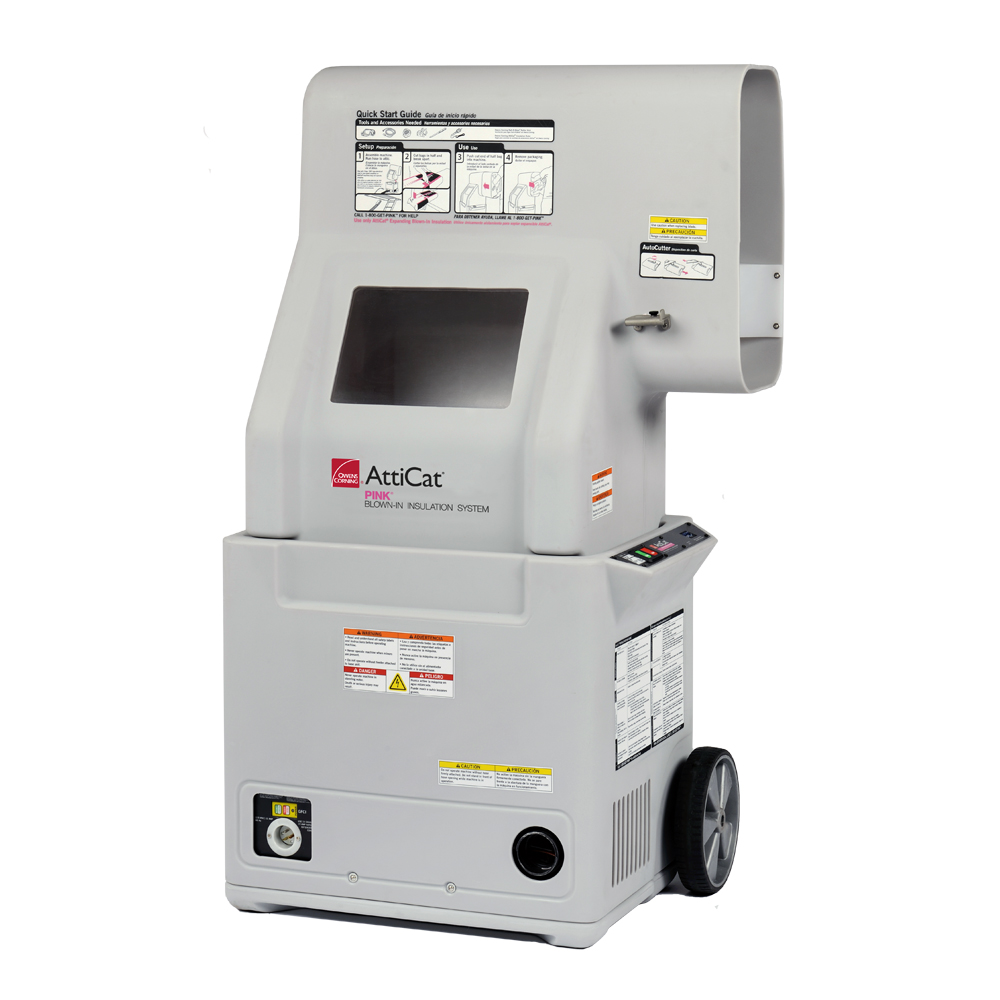OK for the most part these do not go in attics, but can. As long as you have a pretty good attic opening you can fit these in there and I have had to in two story homes - or deal with a mess. In no way am I advocating putting these in attics as a norm but I have done it a couple times with no issues. There were pros/cons - on each that I did it there were other trades working for me in the house and even if there were cons it reduced the risk of me messing something up.
These weigh around 100 pounds. A bigger example is pictured below. The Attic Cat is really the biggest one I have used and I have done this more times than I can remember. But this is for sure a DIY opportunity.

Steps and tips:
- Mostly pros use these. No idea why since it is comically easy but this is the truth. Meaning you will find these available probably the most on Sundays. I can always go to big orange and find one/all there waiting to be used.
- You will get the machine - example above - and usually a large trashcan with a long hose inside. This is the biggest issue and thing you need to work out - how do I get machine, trashcan, and insulation back to house. Even with the largest truck or SUV you are not doing this in one load. Plan for making multiple trips or what I do is just go by and grab the insulation whenever the week before. (keep receipt to get possible rental free*)
- You will get out of the store faster if you get someone to get trashcan/hose for you first and meet you at checkout while you load insulation on a cart. Most stores you have to go to rental desk too for the machine. The rental desk for the most part just logs paperwork and just gives you something to show the checkout. Honestly I could walk out of almost any big box with a machine given I bought insulation and I doubt anyone would saying anything - why they usually keep hose separate. Another note on this - almost all rental machines I have seen are manufacturer specific. You can't always just grab X machine to blow out Y insulation. X machine requires X insulation for the most part. Why I say this is that the rental counter is usually 200 feet from the checkout. The checkout person probably does not know or care if you grabbed the wrong machine (machine should have been sitting right next to your insulation).
- Most stores offer free rental with a certain amount of insulation per product. Factor this in when you are doing the maths.
- This is really a two person job. One person should feed the machine and the other blows the insulation.
- Both should wear long-sleeves, masks and eye-wear. Attic person should have pants.
- The standard hose length at these places is 100 feet. I have done some big houses without coming close to the end of the hose. Stores do have extra hoses but not all manufacturers have hoses that can combine. Don't assume anything. Also if you are putting the machine outside and snaking through three rooms in a house before hitting the attic (I have seen it) then your experience will suffer.
- There is stop/start at the end of the hose - sometimes they work.
- Do not cover any kind of vents/gables whatever. You should taper to them if they are low.
- Whatever you think you are going to use, you will probably use more. Buy a lot extra. Easy to take back, sucks when you are 50 feet through an attic and need to go to the store.
- If taking machine in attic you should put it on a plywood sheet and we usually wrap it with a bungee so it doesn't roll. Again this isn't normal but I have done it and honestly if the person feeding can kind of stand and easy to get insulation in attic it is really faster (note I am saying I have done this but between my son and I we can lift this quite easily - this is not for everyone). The cleanup by the feeder takes almost as long as blowing the attic. Most people keep the feeder outside but that is a pain to clean too. On a windy day you have insulation pieces all over the yard and neighbors eyeballing you.
- The person blowing insulation shouldn't have to move a ton. You can extend the hose a good 10-15 feet out in front of you plus it should shoot out another 10 feet. Have to do the low pitch areas with extending hose and tilting it to shoot off right. Having someone that knows how to use the hose right and not just be all over the place can make for a much more satisfying insulation experience.